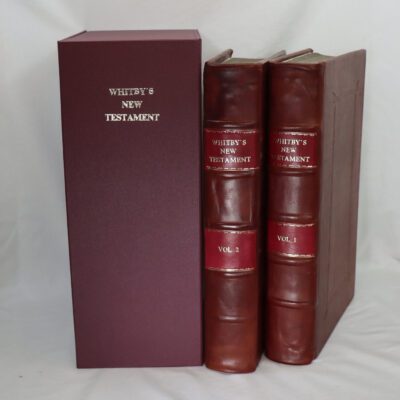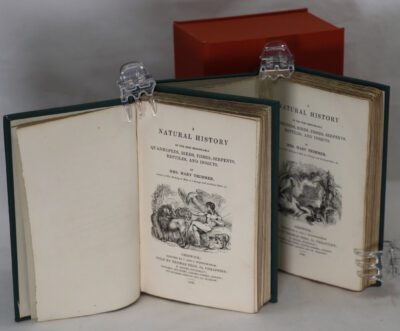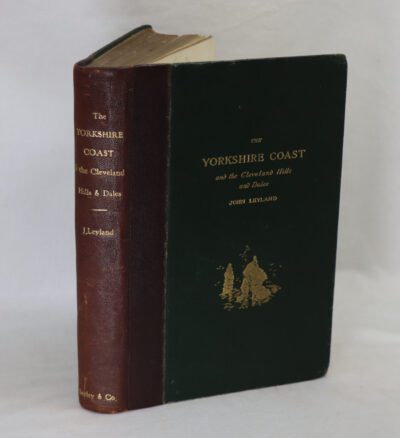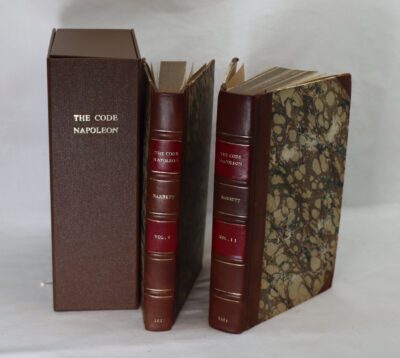Astle on Writing.
By Thomas Astle
Printed: 1803
Publisher: J White. London
Edition: second edition with additions
| Dimensions | 24 × 29 × 3.5 cm |
|---|---|
| Language |
Language: English
Size (cminches): 24 x 29 x 3.5
Condition: Fine (See explanation of ratings)
FREE shipping
Item information
Description
Full tan leather binding. Brown title plate with gilt lettering, banding and emblems on the spine.
Published by London, 1803. Second (and best) edition, with additions., 1803
The first major English work of paleography. The plates illustrate all sorts of writing and alphabets, including Phoenician, Greek, Lombardic, Celtic, modern Gothic, Franco-Teutonic, ornamented initials, Secret Writing, and Ogham
Astle’s chief work, The Origin and Progress of Writing, was a contribution to the English literature of palaeography, intended to be a work of diplomatics. The plates were engraved by Benjamin Thomas Pouncey. The preparation of the text and notes of the edition of the Rotuli Parliamentorum ut et petitiones et placita in Parliamento, etc. [1278–1503], London, 1767–77, 6 vols, folio, was undertaken by Morant and John Topham down to 2nd Henry VI, and after that period by Topham and Astle. Dr. John Strachey saw the volumes through the press. The Will of Henry VII was reproduced by Astle in 1775 from the original in the chapter house at Westminster.
The Origin and Progress of Writing, as well Hieroglyphic as Elementary, illustrated by engravings taken from marbles, manuscripts, and charters, ancient and modern: also some account of the origin and progress of printing, London, 1784, 4to, with 31 plates; the ‘second edition, with additions,’ London, 1803, 4to, 31 plates and portrait, contains Appendix on the Radical Letters of the Pelasgians (published separately in 1775)
Thomas Astle FRS FRSE FSA (22 December 1735 – 1 December 1803) was an English antiquary and palaeographer. Astle eventually brought together the most remarkable private collection of manuscripts in the country. Thomas Percy acknowledges his help while investigating ballad literature. He was a conductor of The Antiquarian Repertory, and contributed to the Archaeologia and Vetusta Monumenta of the Society of Antiquaries. In the latter appeared his contribution on unpublished Scottish seals. The editorship of the Taxatio Ecclesiastica and the Calendarium Rotulorum Patentium (Record Commission, 1802, 2 vols, folio), has been ascribed in error to Astle; John Caley edited the former work, and Caley with Samuel Ayscough the latter one.
His printed books, chiefly collected by Morant, were purchased from the executors in 1804, for the sum of £1,000, by the founders of the Royal Institution. The collection of manuscripts was left by will to the Marquis of Buckingham, in token of the testator’s regard for the Grenville family, upon payment of the nominal sum of £500. The marquis caused a room to be erected by John Soane for their reception at Stowe.
Astle was an efficient and zealous keeper, working on storage and indexation. A Catalogue of the MSS. in the Cottonian Library … with an account of the damage sustained by fire in 1731 and a catalogue of the charters preserved was published by Samuel Hooper in 1777, with a dedication to Astle. He had no literary connection with the Will of King Alfred (1788), often said to have been translated by him. Sir Herbert Croft was the editor of this work; the translation and most of the notes were furnished by the Rev. Owen Manning. Besides many contributions to the Archaeologia between 1763 and 1802
Benjamin Thomas Pouncy (died 1799) was an English draughtsman and engraver. He was the son of Edward Pouncy, born around 1750, and the family background was in Kent. He was a pupil of William Woollett, stated to have been his brother-in-law by the Gentleman’s Magazine. He obtained employment through Lambeth Palace, and from the 1770s assisted Andrew Ducarel in his research with illustrations. A fellow of the Incorporated Society of Artists, Pouncy exhibited topographical views with them in 1772 and 1773; he also sent such works to the Royal Academy in 1782, 1788, and 1789. He died in Pratt Street, Lambeth, on 22 August 1799, and was buried in the graveyard of the parish church.
Pouncy executed facsimiles of the Domesday surveys for Surrey and Worcestershire. He engraved the plates for antiquarian and topographical works, including:
- Andrew Ducarel’s History of St. Katherine’s Hospital, 1782;
- Thomas Astle’s Origin and Progress of Writing, 1784;
- Some Account of the Alien Priories, edited by John Nichols, 1779; and
- John Ives, Remarks upon the Garianonum of the Romans, 1774.
In later life, Pouncy produced plates of landscape and marine subjects after popular artists, such as:
- thens in its Flourishing State, after Richard Wilson, and Athens in its Present State of Ruin, after Solomon Delane (a pair);
- Sortie made by the Garrison of Gibraltar on 27 Nov. 1781, after Antonio Poggi;
- The building, chase, unlading, and dissolution of a cutter (a set of four), after John Kitchingman, 1783 and 1785;
- W. View of Rochester, after Joseph Farington, 1790;
- The Morning of the Glorious First of June 1794, after Robert Cleveley, 1796;
- The Windmilland The Watermill, from his own drawings, 1787; and
- Four landscapes after J. Hearne.
Pouncy also executed many of the plates for Captain Cook’s second and third Voyages, after William Hodges and John Webber, 1777 and 1784; George Staunton’s Embassy of Lord Macartney to China, 1797; Farington’s Views of the Lakes in Cumberland and Westmorland, 1789; Robert Bowyer’s History of England, Thomas Macklin’s Bible, and the Copperplate Magazine.
Woollett engraved The Grotto at Amwell, from a drawing by Pouncy, as an illustration to John Scott of Amwell’s Poems, 1782.
Want to know more about this item?

Share this Page with a friend













